Photos and text by Elise Schimke

Dr. Peter Cole, a history professor at Western Illinois University and creator of CRR19, explains the purpose of a bike tour of Chicago’s Bronzeville and Bridgeport to participants July 27. “I’ve taught at Western Illinois University—four hours from Chicago—for nineteen years,” Cole says. “Based on my experience teaching—I don’t want to exaggerate, but—probably more than several thousand students over the years, I’m not sure if I’ve ever gotten anyone who’s really known in any depth anything about [the 1919 Race Riots], and probably most nothing.”
✶✶✶
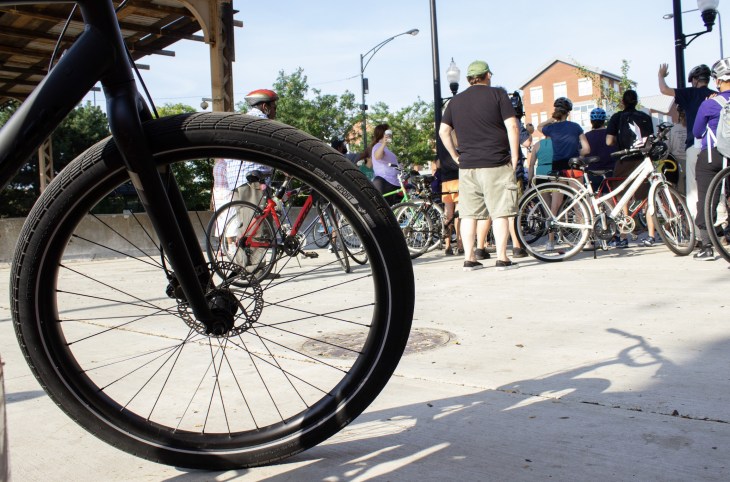
Participants gather at the Green Line near the intersection of State and 35th Street, the site where Edward Lee, John Humphrey and Joseph Sanford (all African American) died on the second day of the race riots.
✶✶✶
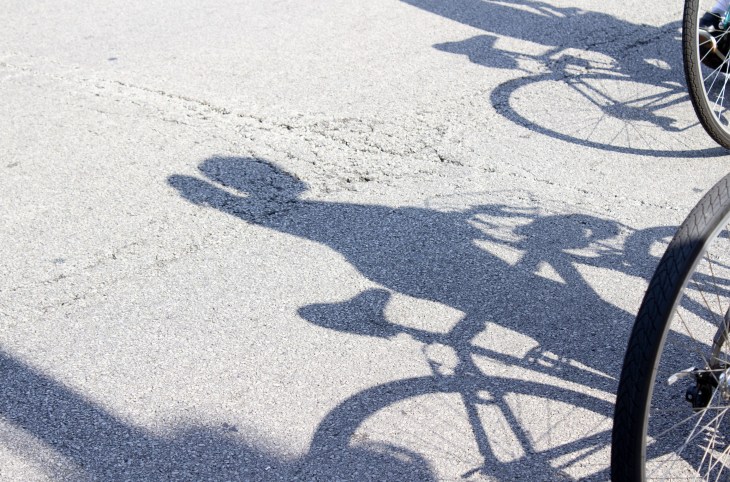
The shadow of a rider stretching before setting off for the next stop of the tour. CRR19 aspires to leave more permanent marks on the streets of Chicago’s South Side through the installation of public art similar to German brass paving stones installed in European cities near the former homes of Holocaust victims.
✶✶✶

The City of Chicago installed the Victory Monument in 1927 to recognize the all-African American Eighth Regiment of the Illinois National Guard’s service in World War I. Competition between black and white veterans looking for jobs after the war was one factor contributed to heightened racial tensions in Chicago, and, eventually, the 1919 Race Riots.
✶✶✶
 Participants pause at the Victory Monument at with Franklin Cosey-Gay, executive director of the Center of Chicago Youth Violence Prevention at the University of Chicago.
Participants pause at the Victory Monument at with Franklin Cosey-Gay, executive director of the Center of Chicago Youth Violence Prevention at the University of Chicago.
✶✶✶
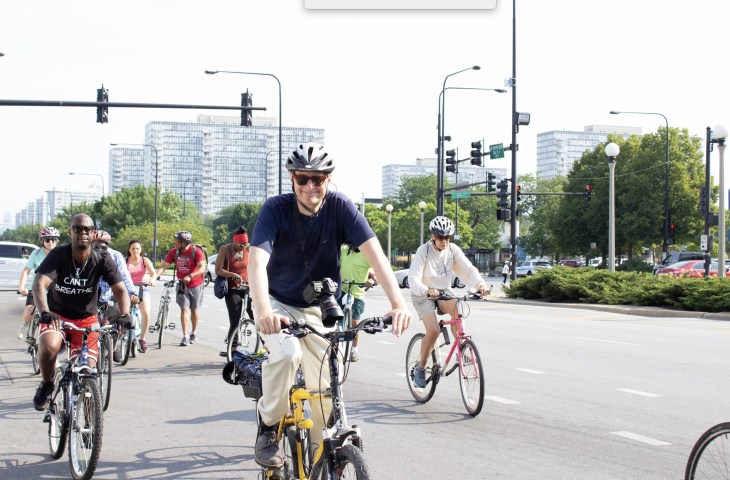 Brad Hunt, vice president of research and academic affairs at the Newberry Library, rides through Bronzeville with fellow CRR19 bikers. Hunt leads planning for the Newberry’s programming series about the 1919 Race Riots, “Chicago 1919: Confronting the Race Riots.” He said he wants to spread knowledge of the riots as widely as possible: “When we started this process, I said, ‘Well, I just don’t want this to be the Newberry. I think we need to get everybody in town because nobody knows this history.’”
Brad Hunt, vice president of research and academic affairs at the Newberry Library, rides through Bronzeville with fellow CRR19 bikers. Hunt leads planning for the Newberry’s programming series about the 1919 Race Riots, “Chicago 1919: Confronting the Race Riots.” He said he wants to spread knowledge of the riots as widely as possible: “When we started this process, I said, ‘Well, I just don’t want this to be the Newberry. I think we need to get everybody in town because nobody knows this history.’”
✶✶✶
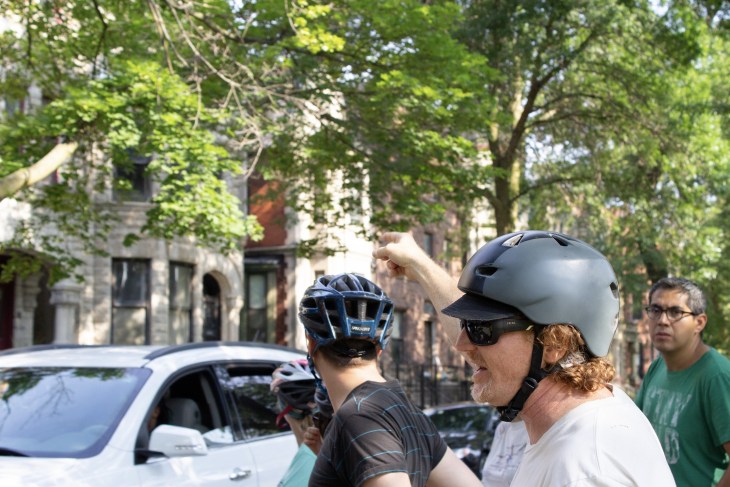
Cole points riders towards the home of Ida B. Wells-Barnett at 3624 S Martin Luther K.ing Dr. She and her husband, Ferdinand Barnett, purchased the home in 1919. One of many ways in which the couple advocated for civil rights in Chicago was through their work as journalists: Ferdinand founded the first black newspaper in the city, which Ida edited.
✶✶✶
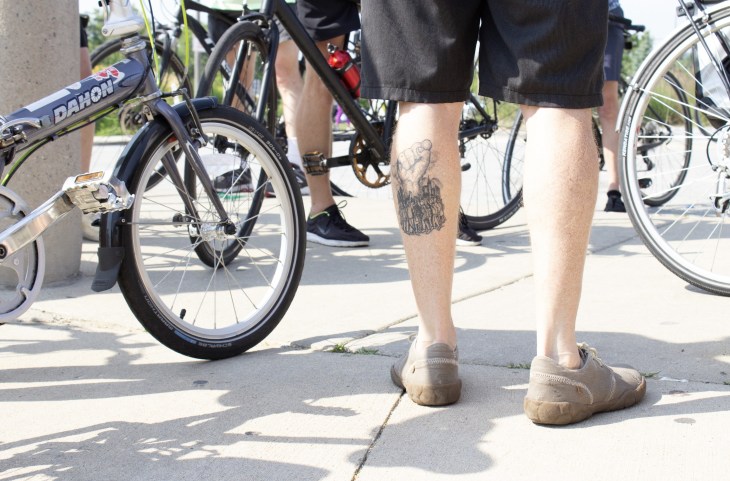
Cole stands at the last stop of the CRR19 bike tour: the 29th Street beach where the 1919 Race Riots started. The week of violence began with the death of Eugene Williams; the seventeen-year-old black teen who drowned when a white man struck Williams’ homemade raft with stones.
✶✶✶✶
To read Schimke’s interview with Cole, click here.